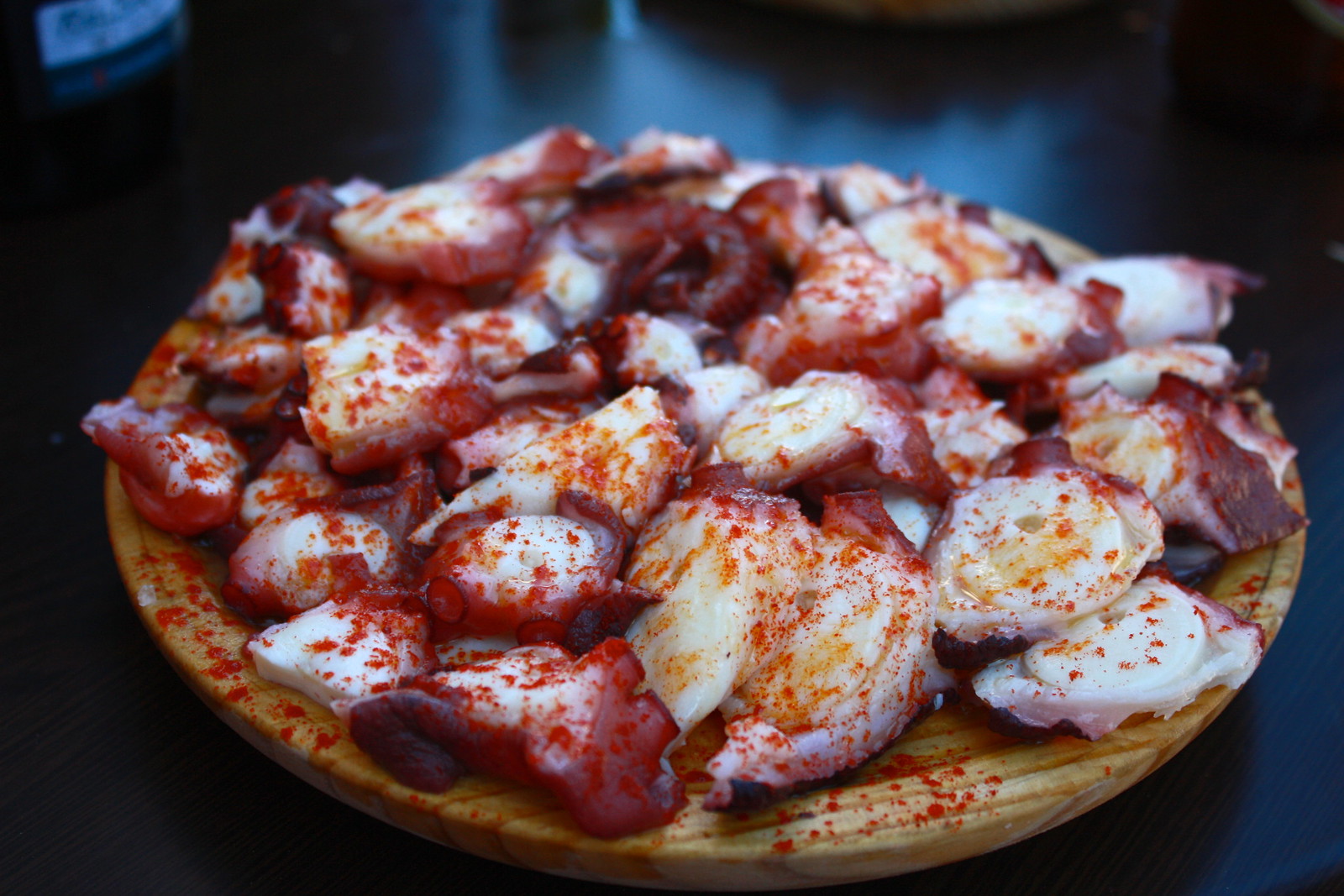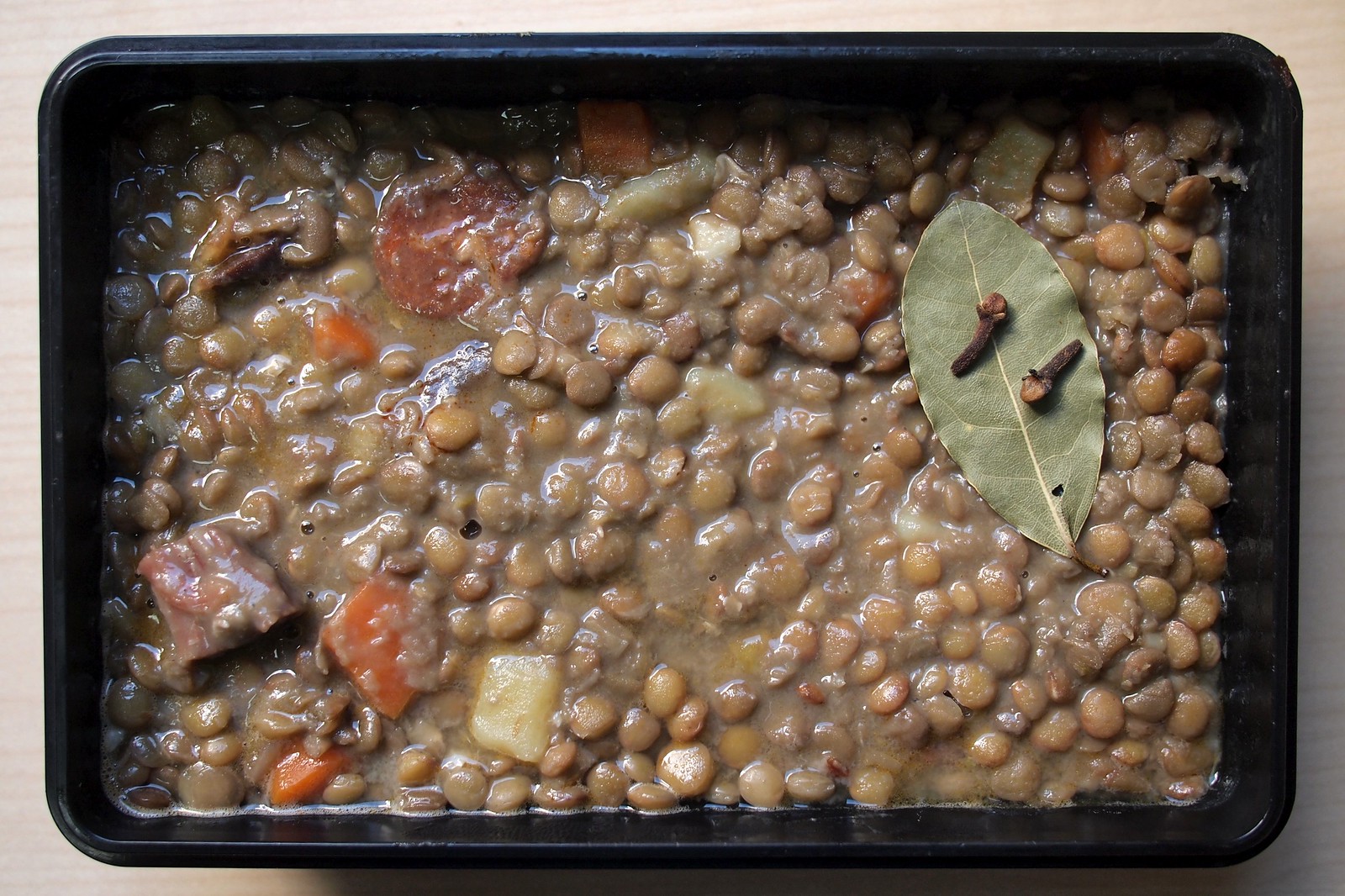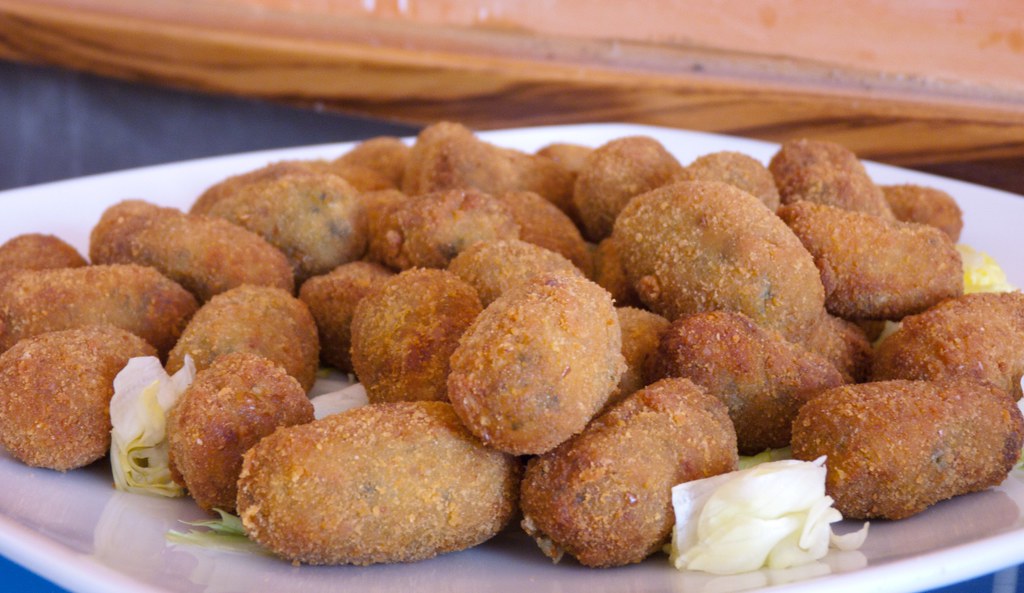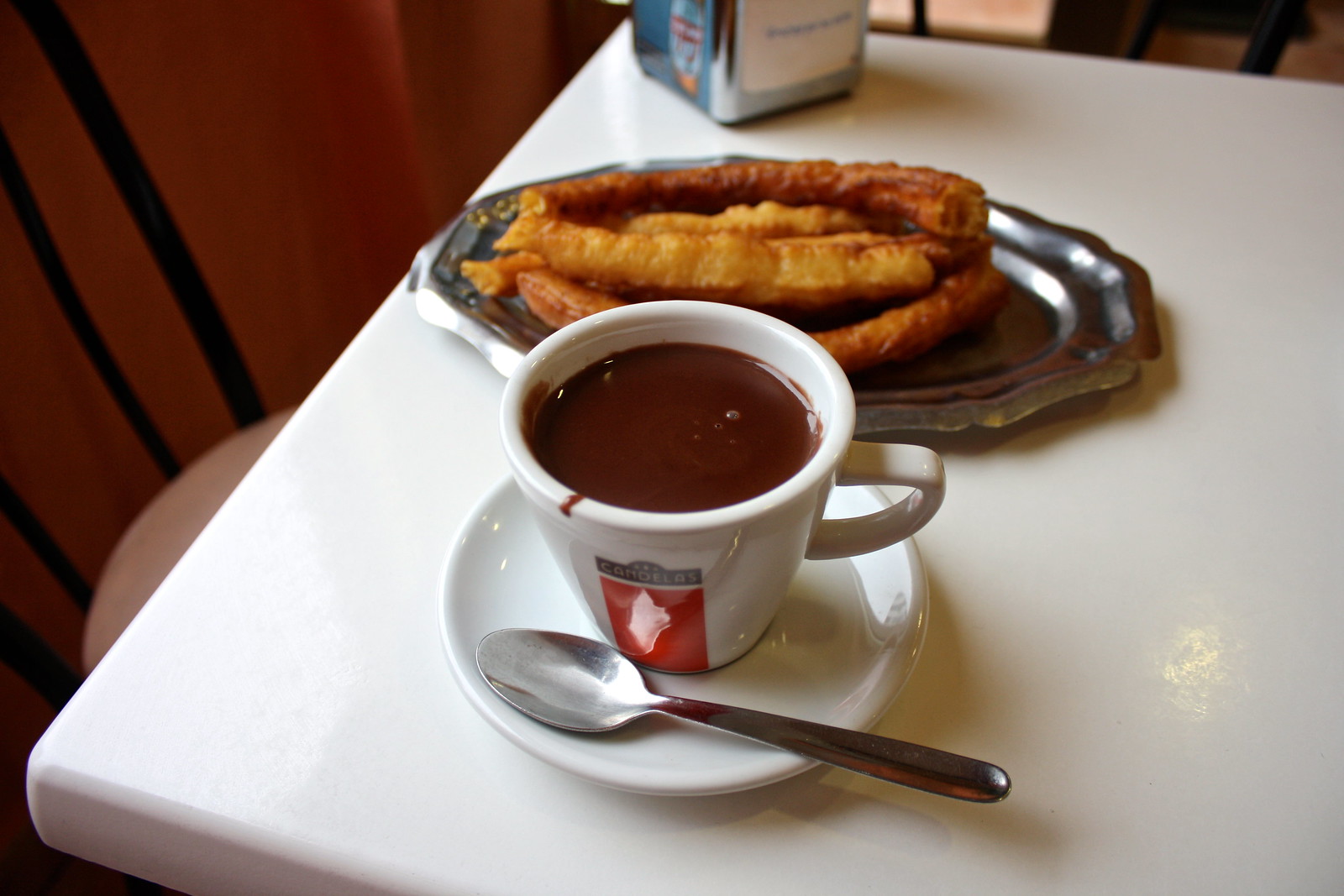Don’t Leave Spain Without Trying These 10 Dishes
I haven’t announced it yet on the blog, but I am getting more and more excited for my parents and brother to come visit me between Christmas and New Years this December. To get ready to be their personal tour guide and translator, I’ve been thinking about what places I want to highlight in Madrid, which restaurants I want to take them to in Santiago, and certain survival phrases in case we get separated (fingers crossed that doesn’t happen).
My family is only going to have six nights to spend in Spain, which is almost too little time to do this country justice—but hey, it’s better than nothing! It would be impossible to cover all aspects of Spanish food in such a brief stay, but I’m hoping that if we stick to the highlights, they’ll leave having gotten a good overview of what authentic Spanish cuisine really is (hint: it’s not paella on a Tuesday evening in Madrid’s Plaza Mayor!). Below are what I hope to share with my family when we head out for lunch or dinner during their trip.
In Spanish class, we learned that the most typical dish from Spain was paella. Like many tourists, I held this misconception until I moved here, but it wasn’t long before I became a convert to tortilla de patatas, this most Spanish of Spanish food. Slices of potatoes and onions are fried in bubbling olive oil before being combined with beaten eggs to create a thick, hearty omelet more akin to a pie than a flimsy breakfast omelet.
You can eat it for breakfast, lunch, or dinner. You can eat it on its own, with mayonnaise, or stuffed into a loaf of bread to make a sandwich. You can order an entire tortilla to share with friends and family at dinner…or you can eat the whole thing yourself. You can order it poca hecha where the egg is still runny and the potatoes are oozing out, or you can ask for it “well done,” firm, starchy, and fluffy.
When tortilla comes up in conversations among expats here, we almost invariably discuss how to deftly flip the frying pan in order to cook the other side of the omelet (i.e., without having eggs and potatoes spill all over the stovetop). Native Spaniards, however, continue to debate whether or not to include onions in the recipe.
In the U.S., beef may be king, but in Spain, pork rules the day. Although Spaniards eat all sorts of meat—from seafood to chicken to snails—pork and pork products took on special significance in the 16th and 17th centuries.
When Ferdinand and Isabella completed their “re-conquest” of Spain from the Moors in 1492, there were still hundreds of thousands of Muslims living in the lands of Castilla and Aragón. Over the next hundred years, people were given an ultimatum: convert to Catholicism or get out. Countless families fled to Morocco or the Ottoman Empire, but many stayed and resisted for decades, often practicing Islam and Judaism in secret while living as Christians in public. One way these covert Jews and Muslims—or even suspect Catholics—proved that they belonged to the faith was by cooking with pork, sausages, or lard. Spaniards have been hog-wild for ham ever since.
Today, Spaniards still religiously consume jamón, or the meat of salt-cured ham legs, although this no longer carries religious or nationalistic overtones. Glossy, deep red, and translucent, jamón is bursting with rich umami savoriness. It makes the perfect dish to share with others, or a great topping for a sandwich. It pairs nicely with some Spanish red wine and local cheese, or as the foundation of an elaborate pincho on top of a slice of bread.
Be aware that not all jamón is created equal. Jamón serrano is cured ham made from garden variety white pigs; the meat is flimsy and pale but still very tasty. Jamón ibérico is cured ham made from black Iberian pigs; the meat is firm and red and has a real depth of flavor. The “de pata negra” or “de bellota” varieties are the crème de la crème.
Pigs do, indeed, dominate southern Spain, but sheep roam all over the meseta or central plateau, and dairy cows graze along the northern coast. So it should come as no surprise that Spain produces dozens of local cheeses, a traditional way to preserve the calories in milk in a time before refrigeration.
Perhaps the most emblematic of Spanish cheesemaking is the manchego variety, or cheese made from sheep’s milk in the south-central plains of La Mancha. A firm, aged cheese, it initially tastes rather dry but as you let it crumble in your mouth the subtle flavor of the sheep milk slowly melts onto your palate. It’s great on its own or paired with some jamón!
Spanish food is nothing if not regional, but over the past hundred years dishes that were once limited to their place of origin have spread across the country. So while octopus has traditionally been a dish native to (inland) Galicia, it’s nothing out of the ordinary to see it on menus in restaurants as far away as Madrid or Murcia.
Slow boiled for 40 minutes, the octopus’s tentacles are snipped into plain-looking medallions that are garnished with olive oil, salt, and pimentón (smoked paprika). Often served with cachelos or potatoes boiled in the octopus broth, it’s one of the most unique things you can eat anywhere in the world—but don’t let the suckers scare you away, as they don’t stick to your tongue. My friend Amy describes the meat as “a cross between calamari and chicken,” so it’s nothing too fishy or chewy if cooked correctly.
If you asked me what my go-to comfort food is, I’d tell you my Mom’s meatloaf, green beans, and mashed potatoes combo—typical American, I know. Ask that same question of a Spaniard and there’s a strong chance they’ll reply with lentejas, or lentil stew. Although every grandma has their own recipe, most variations include green lentils with carrots, potatoes, and chorizo. It’s a simple one-pot dish that rarely gets in the spotlight, but it does make for a perfect starter on a cold winter day.
Before coming to Spain, I didn’t even know “croquette” was a word in the English language, so the Spanish word croqueta is all I’ve ever known for these irresistible little fried nuggets. A filling of ham, fish, or veggies mixed with a creamy béchamel sauce is somehow rolled into a nugget shape, breaded, and then deep fried, sometimes served with mayonnaise or garlicky ali-oli sauce. The thing about these is, there are never enough croquetas on the plate…you’re always left wanting more!
If lentejas are the perfect complement to a chilly fall afternoon, then gazpacho is its counterpart on a stifling-hot summer day. Tomatoes, bell peppers, cucumber, and garlic are blended together in an emulsion with olive oil and vinegar: a healthy, refreshing smoothie that satisfies your thirst and is jam-packed with nutrients. Spaniards will often keep a pitcher of gazpacho in the fridge in summertime, pouring up a bowl or a glass after the hot siesta hours to keep cool. You can eat it on its own or garnish it with dried bread and fresh chopped veggies.
What are churros? They’re similar to their Mexican cousins, although they typically aren’t doused in sugar or filled with cream. Made from a simple combination of flour, water, oil, and eggs, the dough is extruded through a star-shaped die that gives it the distinctive ridges. Deep-fried in a pan (or vat) of hot oil, churros are served alongside molten chocolate, but if you’re not a fan of chocolate (!) you can always dip them in your coffee. It’s okay to eat churros any time of the day: as an indulging breakfast, an afternoon pick-me-up, or as a late-night snack. Plus, at local town fairs, it’s common to find churrería stands serving up fresh churros as well as ones filled with chocolate!
Galicia may be the birthplace of octopus, but squid is beloved all over the country. While it’s possible to order grilled squid (a la plancha), make a point to try the fried squid. A super traditional sandwich in Madrid is a bocadillo de calamares: a bread roll cut in half and stuffed with deep-fried squid rings, perfect with a little mayonnaise or ali-oli. And along the southern coasts of Andalucía, there’s no better way to relax after a long day than with a platter of chipirones fritos (fried baby squid), garnished with freshly squeezed lemon juice.
On this blog, I try to avoid playing into the hands of people who stereotype Spanish culture, especially hostels in Madrid that advertise paella and sangría nights. The reality is that paella (pronounced “pah-AY-yah” [paˈe.ʎa]) originated in the region of Valencia along the eastern Mediterranean coast, and it’s therefore a huge point of pride for valencianos, who have developed countless variations of this unique dish. Yes, Spaniards across the country eat paella every now and then, but it’s more like a big cookout dish for when the whole family comes over on Sunday or major holidays than a go-to plate for weeknights.
That said, paella is a delicious combination of saffron-infused chunky rice with vegetables—such as green beans, peppers, and artichokes—and meat, from chicken and rabbit to mussels, shrimp, and other shellfish. If you happen to be passing through the city of Valencia, do make an effort to try a cooked-to-order paella split among two or more people. If you’re elsewhere in the country, especially Madrid, pass up those tourist trap restaurants, which often serve up paellas from frozen packages. Better to warm up with a typical bowl of callos a la madrileña!
Have you tried everything on this list yet? What would be on your own list of essential Spanish food? Tell me what you think in the discussion below!
My family is only going to have six nights to spend in Spain, which is almost too little time to do this country justice—but hey, it’s better than nothing! It would be impossible to cover all aspects of Spanish food in such a brief stay, but I’m hoping that if we stick to the highlights, they’ll leave having gotten a good overview of what authentic Spanish cuisine really is (hint: it’s not paella on a Tuesday evening in Madrid’s Plaza Mayor!). Below are what I hope to share with my family when we head out for lunch or dinner during their trip.
1) Tortilla de patatas (potato omelet)
 |
| (Source: Luís Rodríguez) |
In Spanish class, we learned that the most typical dish from Spain was paella. Like many tourists, I held this misconception until I moved here, but it wasn’t long before I became a convert to tortilla de patatas, this most Spanish of Spanish food. Slices of potatoes and onions are fried in bubbling olive oil before being combined with beaten eggs to create a thick, hearty omelet more akin to a pie than a flimsy breakfast omelet.
You can eat it for breakfast, lunch, or dinner. You can eat it on its own, with mayonnaise, or stuffed into a loaf of bread to make a sandwich. You can order an entire tortilla to share with friends and family at dinner…or you can eat the whole thing yourself. You can order it poca hecha where the egg is still runny and the potatoes are oozing out, or you can ask for it “well done,” firm, starchy, and fluffy.
When tortilla comes up in conversations among expats here, we almost invariably discuss how to deftly flip the frying pan in order to cook the other side of the omelet (i.e., without having eggs and potatoes spill all over the stovetop). Native Spaniards, however, continue to debate whether or not to include onions in the recipe.
2) Jamón ibérico (Iberian cured ham)
 |
| (Source: Evan Bench) |
In the U.S., beef may be king, but in Spain, pork rules the day. Although Spaniards eat all sorts of meat—from seafood to chicken to snails—pork and pork products took on special significance in the 16th and 17th centuries.
When Ferdinand and Isabella completed their “re-conquest” of Spain from the Moors in 1492, there were still hundreds of thousands of Muslims living in the lands of Castilla and Aragón. Over the next hundred years, people were given an ultimatum: convert to Catholicism or get out. Countless families fled to Morocco or the Ottoman Empire, but many stayed and resisted for decades, often practicing Islam and Judaism in secret while living as Christians in public. One way these covert Jews and Muslims—or even suspect Catholics—proved that they belonged to the faith was by cooking with pork, sausages, or lard. Spaniards have been hog-wild for ham ever since.
Today, Spaniards still religiously consume jamón, or the meat of salt-cured ham legs, although this no longer carries religious or nationalistic overtones. Glossy, deep red, and translucent, jamón is bursting with rich umami savoriness. It makes the perfect dish to share with others, or a great topping for a sandwich. It pairs nicely with some Spanish red wine and local cheese, or as the foundation of an elaborate pincho on top of a slice of bread.
Be aware that not all jamón is created equal. Jamón serrano is cured ham made from garden variety white pigs; the meat is flimsy and pale but still very tasty. Jamón ibérico is cured ham made from black Iberian pigs; the meat is firm and red and has a real depth of flavor. The “de pata negra” or “de bellota” varieties are the crème de la crème.
3) Queso manchego (cured cheese from La Mancha)
 |
| (Source: Christopher Brown) |
Pigs do, indeed, dominate southern Spain, but sheep roam all over the meseta or central plateau, and dairy cows graze along the northern coast. So it should come as no surprise that Spain produces dozens of local cheeses, a traditional way to preserve the calories in milk in a time before refrigeration.
Perhaps the most emblematic of Spanish cheesemaking is the manchego variety, or cheese made from sheep’s milk in the south-central plains of La Mancha. A firm, aged cheese, it initially tastes rather dry but as you let it crumble in your mouth the subtle flavor of the sheep milk slowly melts onto your palate. It’s great on its own or paired with some jamón!
4) Pulpo a la gallega (Galician-style octopus)
 |
| Called pulpo á feira in Galician |
Spanish food is nothing if not regional, but over the past hundred years dishes that were once limited to their place of origin have spread across the country. So while octopus has traditionally been a dish native to (inland) Galicia, it’s nothing out of the ordinary to see it on menus in restaurants as far away as Madrid or Murcia.
Slow boiled for 40 minutes, the octopus’s tentacles are snipped into plain-looking medallions that are garnished with olive oil, salt, and pimentón (smoked paprika). Often served with cachelos or potatoes boiled in the octopus broth, it’s one of the most unique things you can eat anywhere in the world—but don’t let the suckers scare you away, as they don’t stick to your tongue. My friend Amy describes the meat as “a cross between calamari and chicken,” so it’s nothing too fishy or chewy if cooked correctly.
5) Lentejas (lentil stew)
 |
| (Source: Xurxo Martínez) |
If you asked me what my go-to comfort food is, I’d tell you my Mom’s meatloaf, green beans, and mashed potatoes combo—typical American, I know. Ask that same question of a Spaniard and there’s a strong chance they’ll reply with lentejas, or lentil stew. Although every grandma has their own recipe, most variations include green lentils with carrots, potatoes, and chorizo. It’s a simple one-pot dish that rarely gets in the spotlight, but it does make for a perfect starter on a cold winter day.
6) Croquetas (croquettes/fried nuggets)
 |
| (Source: Xisco Bibiloni) |
Before coming to Spain, I didn’t even know “croquette” was a word in the English language, so the Spanish word croqueta is all I’ve ever known for these irresistible little fried nuggets. A filling of ham, fish, or veggies mixed with a creamy béchamel sauce is somehow rolled into a nugget shape, breaded, and then deep fried, sometimes served with mayonnaise or garlicky ali-oli sauce. The thing about these is, there are never enough croquetas on the plate…you’re always left wanting more!
7) Gazpacho (cold tomato soup)
 |
| (Source: James Blick) |
If lentejas are the perfect complement to a chilly fall afternoon, then gazpacho is its counterpart on a stifling-hot summer day. Tomatoes, bell peppers, cucumber, and garlic are blended together in an emulsion with olive oil and vinegar: a healthy, refreshing smoothie that satisfies your thirst and is jam-packed with nutrients. Spaniards will often keep a pitcher of gazpacho in the fridge in summertime, pouring up a bowl or a glass after the hot siesta hours to keep cool. You can eat it on its own or garnish it with dried bread and fresh chopped veggies.
8) Chocolate con churros (hot chocolate with fried dough)
 |
| From my favorite churrería in Úbeda |
What are churros? They’re similar to their Mexican cousins, although they typically aren’t doused in sugar or filled with cream. Made from a simple combination of flour, water, oil, and eggs, the dough is extruded through a star-shaped die that gives it the distinctive ridges. Deep-fried in a pan (or vat) of hot oil, churros are served alongside molten chocolate, but if you’re not a fan of chocolate (!) you can always dip them in your coffee. It’s okay to eat churros any time of the day: as an indulging breakfast, an afternoon pick-me-up, or as a late-night snack. Plus, at local town fairs, it’s common to find churrería stands serving up fresh churros as well as ones filled with chocolate!
9) Calamares fritos (fried squid)
 |
| (Source: juantiagues) |
Galicia may be the birthplace of octopus, but squid is beloved all over the country. While it’s possible to order grilled squid (a la plancha), make a point to try the fried squid. A super traditional sandwich in Madrid is a bocadillo de calamares: a bread roll cut in half and stuffed with deep-fried squid rings, perfect with a little mayonnaise or ali-oli. And along the southern coasts of Andalucía, there’s no better way to relax after a long day than with a platter of chipirones fritos (fried baby squid), garnished with freshly squeezed lemon juice.
10) Paella valenciana (Valencian meat-and-veggie rice dish)
 |
| (Source: Spanish School Tarjona) |
On this blog, I try to avoid playing into the hands of people who stereotype Spanish culture, especially hostels in Madrid that advertise paella and sangría nights. The reality is that paella (pronounced “pah-AY-yah” [paˈe.ʎa]) originated in the region of Valencia along the eastern Mediterranean coast, and it’s therefore a huge point of pride for valencianos, who have developed countless variations of this unique dish. Yes, Spaniards across the country eat paella every now and then, but it’s more like a big cookout dish for when the whole family comes over on Sunday or major holidays than a go-to plate for weeknights.
That said, paella is a delicious combination of saffron-infused chunky rice with vegetables—such as green beans, peppers, and artichokes—and meat, from chicken and rabbit to mussels, shrimp, and other shellfish. If you happen to be passing through the city of Valencia, do make an effort to try a cooked-to-order paella split among two or more people. If you’re elsewhere in the country, especially Madrid, pass up those tourist trap restaurants, which often serve up paellas from frozen packages. Better to warm up with a typical bowl of callos a la madrileña!
Have you tried everything on this list yet? What would be on your own list of essential Spanish food? Tell me what you think in the discussion below!

